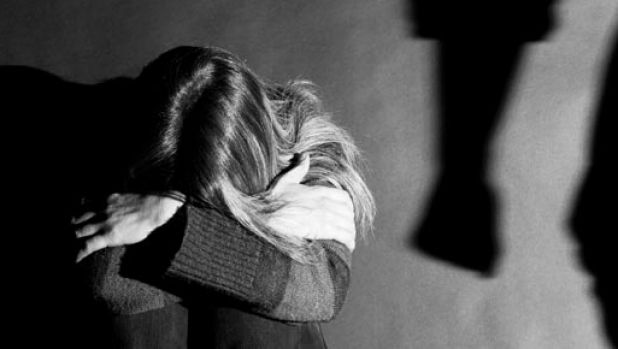Key Data Linking CDV and Adult Mental Health
Research shows a strong connection between witnessing domestic violence in childhood and mental health struggles in adulthood. While the effects can vary, patterns emerge across studies that highlight the profound and lasting toll of childhood domestic violence on emotional well-being.
Notable findings include:
- Women who witnessed domestic violence as children are significantly more likely to attempt suicide compared to those who did not
- CDV is associated with higher rates of depression, anxiety, and PTSD in adulthood
- Exposure to violence in the home can increase emotional dysregulation and reduce resilience under stress
- Adults affected by CDV often report chronic feelings of shame, low self-esteem, and mistrust in relationships
- The combination of CDV with other adverse experiences can compound mental health risks even further
These statistics are not just numbers. They represent the lived reality of many people who carry emotional weight from a childhood that never felt safe. Recognizing these patterns helps explain why some adults struggle, even when their current environment seems stable. Early intervention and ongoing support can have a profound impact on long-term outcomes.
Barriers Women Face in Seeking Help After Witnessing Violence
Women who grew up with domestic violence often carry pain that remains unspoken. Even when they feel the emotional impact years later, many hesitate to seek help. The barriers are not always obvious, but they are real, and they can prevent progress from even beginning.
Common barriers include:
-
Minimization of their experience
If the violence was not directed at them, many believe it “wasn’t that bad” or that they shouldn’t still be affected.
-
Lack of awareness
Many adults have never heard the term childhood domestic violence. Without language to describe what happened, it’s harder to seek the proper support.
-
Fear of judgment or not being believed
Sharing these experiences can feel risky, especially if past attempts to open up were dismissed or misunderstood.
-
Internalized shame or guilt
Some women believe they should have done something to stop the violence, or that their emotional struggles now are signs of weakness.
-
Mistrust of systems or professionals
When safety and trust were missing in childhood, it can be difficult to believe that support systems are safe now.
-
Pressure to appear strong
Cultural or personal expectations often tell women they must be self-reliant, even when they are hurting.
Naming these barriers is the first step toward overcoming them. Help is not about admitting weakness. It’s about recognizing that what happened wasn’t your fault—and that support exists for whatever comes next.
What Suicide Risk Reveals About the Long-Term Impact of CDV
Suicidal thoughts and behaviors are often symptoms of deep, unresolved pain. When suicide risk increases among those who witnessed domestic violence in childhood, it points to something critical: the emotional toll of childhood domestic violence doesn’t end when the child grows up. It often lingers, reshaping how someone sees themselves, others, and their place in the world.
This risk reveals several key truths:
-
Emotional wounds from witnessing violence can be just as lasting as physical harm
-
Without intervention, the effects of chronic fear, shame, and powerlessness may continue well into adulthood
-
Many individuals carry invisible beliefs that they are broken, unlovable, or to blame for what happened
-
Silence around childhood experiences often leads to isolation in adulthood
-
Long-term suffering is not always visible on the outside, but it can feel constant on the inside
When someone struggles with suicidal thoughts years after childhood, it doesn’t mean they are weak or beyond help. It means the original pain was never fully seen or supported. Suicide risk is a signal that highlights the urgent need to recognize and respond to childhood domestic violence as a severe, long-lasting form of trauma. Addressing it directly can lead to real, lasting change.
Ways to Support Women Beyond Therapy
Not everyone affected by childhood domestic violence feels ready for therapy. Others may not have access or may require different forms of support in addition to it. It is not one-size-fits-all. There are many ways to move forward that don’t need a clinical setting.
Here are some alternative forms of support:
-
Self-guided workbooks and journals
These can help process thoughts and patterns at your own pace, in private and without pressure.
-
Peer support groups
Safe, moderated spaces—whether in person or online—offer a chance to connect with others who have lived through similar experiences.
-
Creative expression
Writing, drawing, movement, or music can help release feelings that are difficult to express in words.
-
Boundaries practice
Setting small boundaries in daily life builds a sense of control and emotional safety.
-
Reading trauma-centered books
Books that speak directly to the experience of childhood trauma can offer perspective and validation.
-
Body-based practices
Activities such as yoga, stretching, or walking can calm the nervous system and help restore a sense of presence in the body.
-
Daily routines and structure
Creating predictability in your environment can ease anxiety and help rebuild a sense of stability.
Support doesn’t have to start in a therapist’s office. Sometimes the first step is quiet, personal, and entirely your own. What matters is finding what helps you feel safer, more present, and more connected to yourself and to others.

